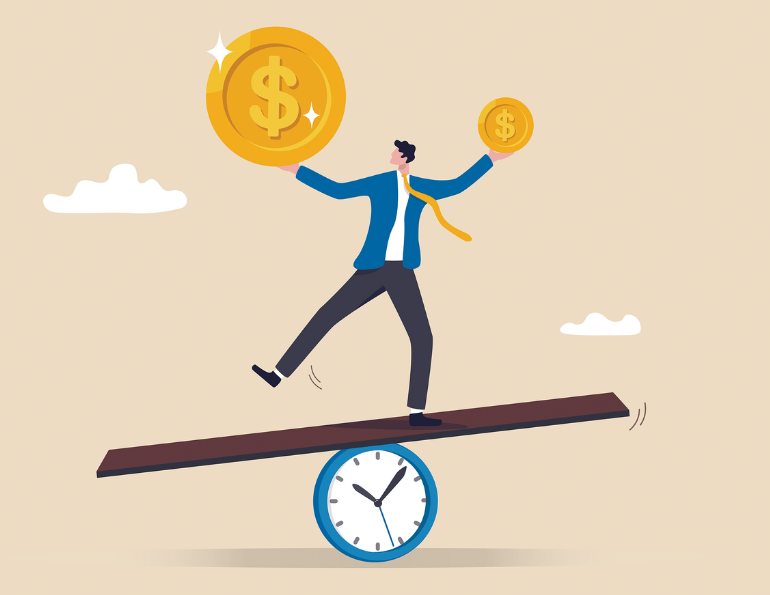When we first started reporting this story, the question seemed straightforward: What does the One Big Beautiful Bill (OBBB) mean for ski area capital planning?
The bill includes provisions such as the continuation of 100 percent bonus depreciation, R&D deductions, permanent pass-through tax relief, and a new “pay-to-play” NEPA option. It also accelerates the phaseout of clean energy and EV incentives. On paper, these provisions appear likely to affect some ski area investment decisions.
But after talking with operators and industry voices around the country, a theme emerged: while the OBBB matters, the real influences on capital planning today are tariffs, inflation, and the high cost of borrowing.
What the Bill Gives and Takes Away
Tax policy. The OBBB retained 100 percent bonus depreciation, a policy that once sparked a wave of spending. “The first time around, it absolutely drove projects for us and for the industry,” recalled consultant and former Vail Resorts COO Chris Jarnot. “There were shovel-ready projects that maybe didn’t quite meet the ROI threshold, or that banks weren’t confident in at smaller areas, but when the math changed and you could deduct the capital upfront, that pushed a lot of them forward. It also created an impetus. Even if you hadn’t done the ROI work yet, this was the push to figure it out.”
That helped fuel what National Ski Areas Association (NSAA) government affairs consultant Grant Colvin called “a golden age of ski area infrastructure.”
Today, though, “The fact that it’s been extended doesn’t really change anything,” said Jarnot.
“Bonus depreciation continues a lot of the benefits that had been in place, so from that standpoint, that’s a positive,” added Bill Jensen, longtime industry leader and a partner at Sundance Resort, Utah. “I’m not sure that ski area owners make their capital decisions based on the depreciation schedule, but the policy does allow more dollars to remain in the business that can be utilized across the whole business.”
The bill also continued immediate research and development expensing and made permanent the 20 percent pass-through deduction.
“If industry investments slow,” said Jensen, “it won’t be the BBB, it will be the economy and the interest rate environment.”
“Pay-to-play” NEPA. Another notable change: OBBB’s “pay-to-play” NEPA provision. This allows project sponsors to “opt in” by paying 125 percent of the Forest Service’s costs to supervise NEPA reviews. Once the fee is paid, an environmental assessment must be issued within six months, and an environmental impact statement within one year of the notice of intent.
In a “Capitol Watch” report, NSAA director of public policy Geraldine Link cautioned that other statutory reviews, such as Section 106 cultural reviews or Endangered Species Act consultations, are not bound by these deadlines. Nor are forest plan amendments or objection processes.
That suggests the new provision may not deliver the clean timeline operators are hoping for.
“There’s an appreciation for trying to fast-track things, but the process right now is muddled, not simple and straightforward,” said Ski NH president Jessyca Keeler.
Jarnot heard a different take from his clients: “The tone of business friendliness going on is absolutely driving the Forest Service to put the pedal to the metal on some projects and move them forward.”
For SE Group senior environmental planning associate Scott Prior, the economics are straightforward. “When considered against the rising cost of infrastructure, materials, or simply not being able to get returns on a project for a longer amount of time, the increase in fees to complete NEPA review seem negligible,” he said. “I would expect that most ski resorts would happily pay additional fees on the permitting process to save on other costs down the road.”
Clean energy and EV incentives. The OBBB speeds up the phaseout of clean energy and EV credits, rolling them back years earlier than the Biden-era Inflation Reduction Act envisioned.
For Powdr, the rollback won’t stop clean energy investment but will change the math. “Powdr and our resorts will continue to facilitate EV charging, regardless of incentives,” said VP of sustainability Raj Basi. “We’ve used the 30 percent investment tax credit, including on a project that’s nearing completion, and we’ve tapped state incentives for other projects. But the competitive space is shifting—Blink declared bankruptcy, LG left the charger market—and that attrition almost certainly means higher prices for materials and labor.
“We’ll keep prioritizing alternative energy and EVs,” he added, “but the ROI is going to look different going forward. » Current projects aren’t affected, but it will impact how we analyze future projects and potentially their scale.”
For Ski Vermont president Molly Mahar, the bigger concern is consumer behavior. “The rollback of fleet credits will mean that it may not be as easy for our ski areas to adopt EV technology in their fleets, but the bigger impact is on the travel corridor infrastructure and consumer EV adoption,” she said.
Lost funding. “New Hampshire is an EV desert, especially in the northern and western regions where we rely on tourism,” said Keeler, elaborating on the same concern. “We worked with the state’s Department of Transportation and Department of Environmental Services last fall to include several ski areas, and more than 30 businesses in all, in a $15 million Charging and Fueling Infrastructure community grant proposal that would have covered about 80 percent of the cost of installing level 2 chargers at these businesses around the state. It was approved by the Biden administration in early January and then pulled by the Trump administration just a few weeks later.
“Any funding or policies to encourage EV charging installations are important to New Hampshire,” she continued, “because we’ve estimated the state could lose $1.4 billion in tourism by 2031 if EV drivers simply stop coming because there’s no charging infrastructure.”
State budgets. Looking more broadly, cuts in the OBBB to programs such as Medicare and Medicaid will have state-level budget impacts. “It’s still early to tell how the state budget is going to work out or if we’ll have a gap in funding,” Mahar said. “If there’s a gap, the money has to come from somewhere—maybe higher business or homeowner taxes, or fewer services.”
The state-level uncertainty may move businesses toward caution rather than bullishness, as they wait to see how things will shake out.
Beyond the Bill
Tariffs and inflation. The major destabilizers right now continue to be tariffs and inflation. “Unpredictability is definitely causing heartburn,” said Keeler. “Tariffs are driving up costs of construction, where even a two percent increase is painful; this is much higher. Everyone is affected.”
“A contact told me the cost of an average ski lift has increased 40 percent since Covid,” said resort adviser and analyst Tom Lithgow.
Rick Schmitz, co-owner of Little Switzerland, Crystal Ridge, and Nordic Mountain in Wisconsin, has felt the increase firsthand. “Fixed-grip lifts have doubled in price in the last ten years, a much faster rate than inflation.
“The price of ski area infrastructure has increased astronomically in the last five years, and I don’t think it’s going to slow down,” he continued. “Even if the economy or tariffs improve, prices generally don’t come back down.”
Jensen sees a likely outcome: “Whether it’s lifts or snowcats or snowmaking, equipment will be subject to tariffs. Manufacturers might try to absorb some of it, but more and more businesses are passing that cost on to the end user.”
Implications for the guests. “The industry has always been very sensitive about pricing,” said Jensen. “But with tariffs and inflationary pressure, it’s that much more challenging to figure out an operating plan that meets everybody’s needs without pushing too much onto the guest.
“The customer base the ski industry enjoys tends to be resilient,” he added. “Even in economic downturns, the impact on the ski industry has been modest. But as pricing increases, and the cost of skiing increases, are people deciding to take a pass for a year or two or spend less money on winter recreation?”
The cost of money. Another cost driver: “It’s really hard to get financing for big projects right now,” said Jensen. “Lenders have become very conservative. The cost of money to them is higher, so it gets passed on to you.”
“Many of the institutional lenders have backed out of the industry,” Lithgow agreed. “Finding the money is the challenge.
“For the big guys, it’s happy days,” he added. “The Alterras and Vails of the world fill up the lift manufacturers’ queue every year. Smaller operators don’t have the same access to capital, so they’re left behind.”
That limited access is not new, of course. “It’s been harder to access capital for the last 15 years,” said Lithgow. “After the 2008 collapse, institutional lenders pulled back and businesses had to keep bigger cash reserves. A lot of operators turned to local banks for bigger projects, but overall capital availability shrank.”
The Fed cut rates a quarter percentage point in September and has signaled support for additional cuts, which could help. “The federal interest rate cut will help make accessing funds a little more affordable,” Mahar said. “There’s a lot going on right now, so it’s still early to know the full impact.”
Pushing ahead. For Schmitz, who tries to self-fund as much as possible, the lesson is clear: “Waiting to do capex projects is not going to pay off. Three years from now we may not do something because we can’t afford it. Any time I’ve stretched our business to pay for bigger capex projects, we’re generally very happy that we did. We always look back and say, ‘why didn’t we do it sooner?’
“We just finished a two-million-dollar lodge at Nordic that we’d been saving for over five years,” continued Schmitz. “If I had built it three or four years ago, it would have cost 25 percent less and I could have secured a two percent loan instead of today’s much higher rates. But I don’t want to look back three years from now and wish I’d done it.”
To that end, he’s also borrowing money for two new chairlifts, “because we need them,” he said.
Despite high costs and uncertainty, hitting the pause button isn’t much of an option. “The reality is every resort has a business plan and capital investment is always part of it,” Jensen said. “You don’t buy a chairlift you don’t need.”
On the upside, akin to dealing with the fluctuations of winter weather: “Our industry is really good at tolerating uncertainty and managing through it,” Jarnot noted.





